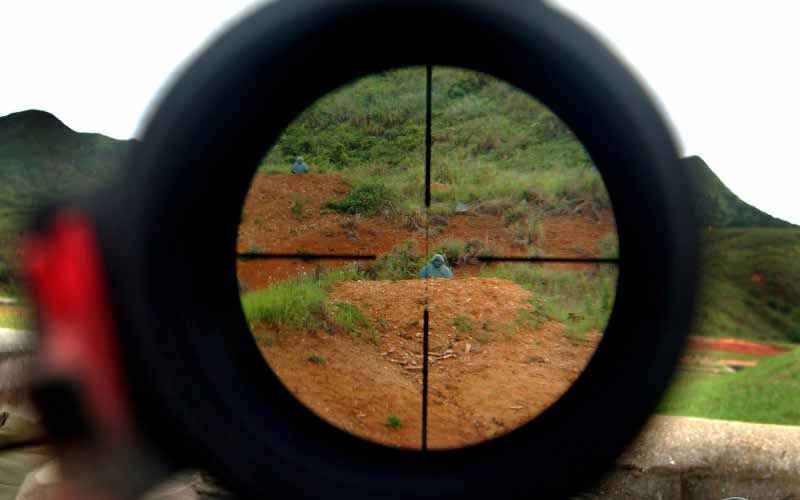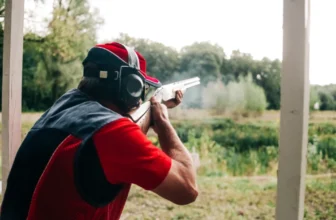Archery has many accessories that enhance the shooting experience. Sights are distinctly suited to the 3-D shooter and bow hunter who loves shooting accurately.
Scopes and sights are used in archery to help with aiming perfectly at targets.
Here we will know about Archery Sights, Scopes and Peeps in details.
Peeps Sight:
The Peep Sight may only be shot on compound bows. This item is an additional target aid for the archer. The Peep Sight is woven into the bowstring, much like a badge. The Compound Archer looks at his crosshair while aiming through the Peep Sight and thus receives a line with which the target can be very precisely targeted.
Some may also be used with enlargements so that the compound shooter can see well even at long distances his target. However, an enlargement can sometimes be an obstacle if the gold is so large that you can no longer find the “X”. Especially with compound shooters it happens during archery again and again that is shot at the neighboring disc.
The Peep Sight is available in many model variations. The simple models allow direct browsing. The slightly more expensive variants have a magnifying lens installed which together with the magnification in the scope, also brings a distant target very close to the eye of the compound shooter.
But not every enlargement is helpful for the archer. Many archers complain that the target cannot be found because the magnification is too long for the short distances.
The distance between Peep and Scope often means that the compound shooter cannot use the peep at all distances. Either the compound shooter must take a slightly different posture for 90 m or for the short 30 m distance.
Peep positions:
For distances of 90 meters and 70 meters, the Peep-Sight is attached to the tendon in a low position. Ideally, this position is determined at about 80 to 82 meters away. The distance between the nock point and Peep-Sight is measured as accurately as possible so that it can be adjusted reproducibly.
For distances of 50 meters and 30 meters, the Peep-Sight is then moved to a higher position. Often two to four millimeters are sufficient. The position should be comfortably adjusted for 40 meters.
Of course, the sight settings change depending on the displacement and the chord angle:
- If the chord angle is 45 ° on the pull, the sight setting changes by exactly half. So if the Peep-Sight is shifted upwards by three millimeters, then the sighting positions are shifted upwards by 1.5 mm.
- If the chord angle is 33 ° on the pull, the sight setting changes by two-thirds. If the Peep-Sight is again shifted by three millimeters, the sight setting changes by two millimeters.
Another problem that occurs when moving the peep-sights is the peep-rotation, i.e. the rotation of the peep-sights in the tendon. With a shift of a few millimeters, these are only small but may still be noticeable.
Scopes:
A good scope should be light, provide a bright, sharp, and sufficiently large target image, if possible, accommodate different targets such as pins and rings. Even the best scope is of little use if the peep does not fit.
They are available in many colors and with a large selection of high-quality lenses which have a central bore in the lightweight and highly recommended plastic version, in which a variety of differently thick and colored pins and rings can be attached. Available in addition are various glare sets, variously colored spirit levels, sun or rain shields and a large assortment of attachable aiming aids.
When enlarging, it should be noted that one should rather not exaggerate. Less is often more because one sees his own shaking stronger by too large magnifications and is then rather tempted to a hesitant shot sequence which in turn usually does not promote precision. A peep that is perfect for the scope is often not easy to find as the ambient light plays a significant role.
Ideally, you should just be able to see the complete scope when looking through the peep to perform a clean ring balance.
There are a lot of factors that make it difficult to bring the scope and peep exactly to the optical axis between eye and disc:
- The Peep-Sight is located in the bowstring and in the extract a few inches in front of the eye.
- The scope is located on a visor boom, which is rigidly connected to the bow.
- The Peep-Sight and the Scope are located a few centimeters above the applied arrow.
- The rear end of the extended bow is located at the anchor point of the shooter.
- If you want to shoot with the bow shallower or steeper, you have to turn the bow almost around the anchor point.
- If the shooter maintains a clean posture, he performs this rotation by kinking the upper body in the hip.
As a result, the complete posture in the shoulder, arm and head area remains identical.
View more article here with:
The Rising opportunities of a crossbow in the Hunting community
5 Reasons why you should choose a crossbow for hunting
Ideal Guide to your Bowhunting Trip
If you hope to sell your products online, you can register here with a few clicks only!










